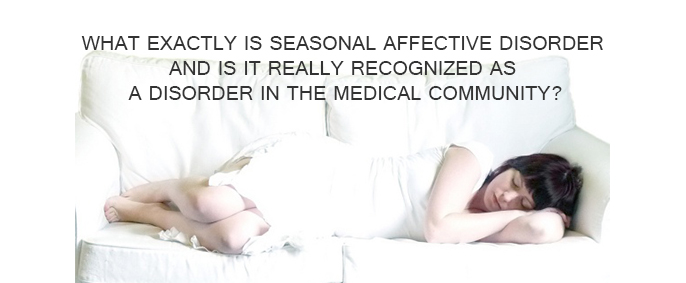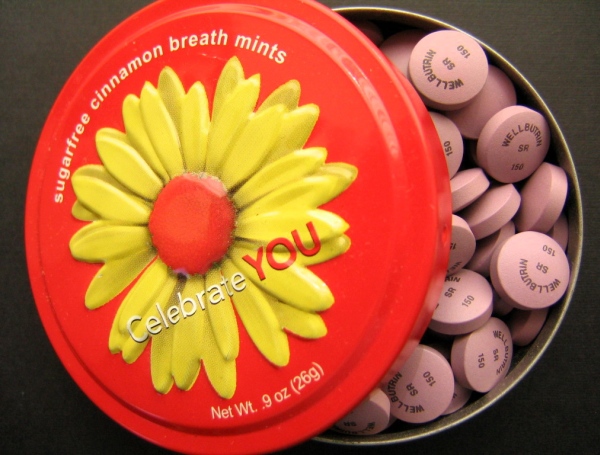
In the past couple of decades there have been many mental illnesses and disorders that have come out of the woodwork and to the forefront of psychological and physiological medicine.
These same illnesses once they come out of the woodwork and the mainstream public hears about them seem to increase in diagnosis and you never know if the diagnosis resulted in the illnesses or the illnesses just finally got recognized.
Many of the illnesses and disorders are not taken as seriously by the general public. The public it seems has gotten a bit wary of the medical community’s constant over-diagnosing and over-medicating people. It seems every year there is a new mental disorder or at least a new name for a mental disorder or illness.

( photo by Alexey Antipov )
Lately seasonal affective disorder or SAD has been brought to the forefront and into the light. Also referred to as ‘winter depression’, seasonal affective disorder is described as a regular relationship between major depressive episodes and a particular season of the year.
For many people (4-6 % of the population) seasonal affective disorder is a very real, very difficult disorder that can be debilitating. And for many people there is no such thing as seasonal affective disorder and it is just another diagnosis for doctors and an excuse to prescribe more medications.
Essentially what SAD is, is depression during particular seasons. You can suffer from depression year round and usually if you have SAD your depression symptoms will worsen during the winter months. This is not because it is cold and actually has nothing to do with the weather but rather with the daylight.
This is why the disorder and its existence have been somewhat controversial because to acknowledge the existence of the disorder you would have to acknowledge that lack of daylight can cause or heighten the effects of depression.
With seasonal affective disorder the affected person will feel more depressed than usual. And with these feelings of depression will come several other symptoms such as feeling anxious, moody, sad and grumpy, a loss of interest in your usual activities that you have always enjoyed, a craving for carbohydrates and accompanying weight gain, and extreme fatigue at all times especially during the day the affected person will feel they need to sleep more.
It is common to experience some of these symptoms or all of these symptoms if you are suffering from seasonal affective disorder.

( photo by Mrs. Chantalle )
People with seasonal affective disorder will notice the illness coming on in the fall around September or October but sometimes even as late as November.
SAD usually affects the person until springtime usually around daylight savings time if their state participates in that. Someone with seasonal affective disorder can expect their symptoms to all but cease by April.
As it is difficult to differentiate seasonal affective disorder from depression itself, many doctors will look at the following when determining if you have SAD:
- Has anyone else in your immediate family been diagnosed with seasonal affective disorder?
- You have been extremely hungry and craving carbohydrates
- You have been gaining weight
- You have been sleeping more than usual and requiring more sleep than usual
Once your doctor determines if you are indeed suffering from seasonal affective disorder instead of the standard diagnosis of depression you will have different treatments to consider. [Depression Treatment]

( photo by PrettyPills )
If you are already suffering from depression and on some form on anti-depressants or anti-anxiety such as Prozac your doctor may add a small dosage of a different form such as Wellbutrin for the months you are affected. This form of treatment has been very successful with many cases of seasonal affective disorder in the past.
Another form of treatment your doctor may discuss with you is light therapy. There are two different types and ways of administering light therapy.
One way to administer light therapy is to sit in front of a ‘light box’ for 30 minutes every morning. Some people use just a regular lamp at their home and sometimes they are given special ‘light boxes’ by their health care practitioner.
Another form of light therapy which is easier to administer and more time efficient is called dawn simulation. Essentially you would hook up a light to a timer that would increasingly become brighter during the morning, resembling a sunrise.

( image source: photobucket )
Some people with a minor case of seasonal affective disorder may feel remarkably better by working out first thing in the morning and staying somewhat busy and active all day.
Seasonal affective disorder is recognized by the American Medical Association as a pattern of depressive episodes that occur in conjunction with certain seasons.
Seasonal affective disorder has also been recognized by the Diagnostic and Statistical Manual of Mental Disorders or DSM-IV which is the most relied upon test for determining mental health disorders.
The DSM-IV defines seasonal affective disorder as a separate mood disorder but within the classification of major depressive and bipolar disorders.
Seasonal affective disorder is a very real thing. If you or someone you know is suffering from depression that becomes heightened during certain seasons or if you are just experiencing depression during certain seasons you may be suffering from a form of seasonal affective disorder.
If you are skeptical of society being over-medicated and fear medication being the only road to treatment remember there are other therapies that may help reduce your symptoms of seasonal affective disorder as well.














